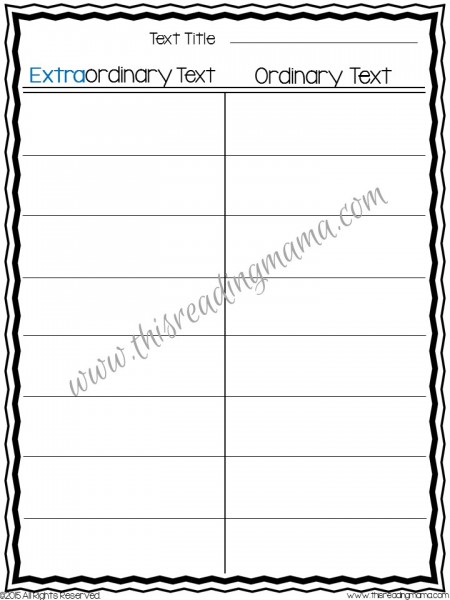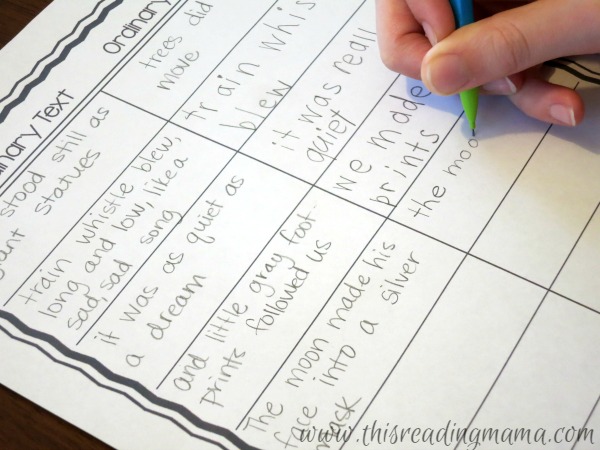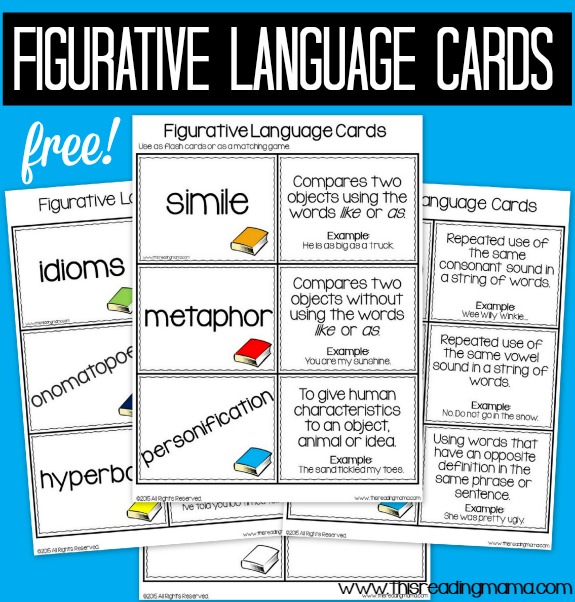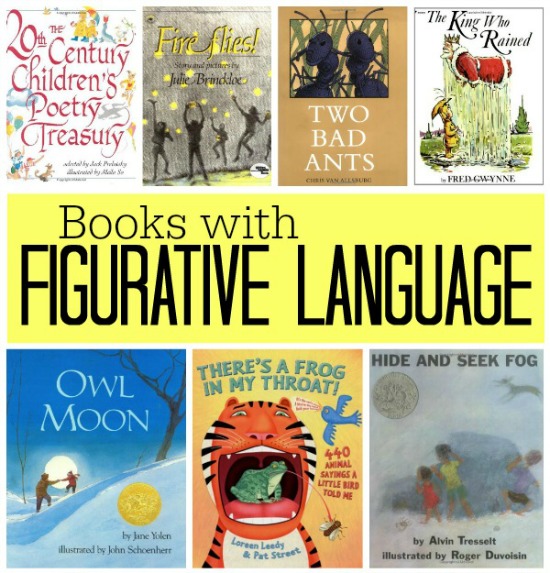ALuv {in 3rd grade} is one of those learners who needs explicit teaching in order to truly get it, especially with vocabulary or figurative language. And that’s okay by me. I love the extra challenge of helping the light bulb come on. It keeps me on my toes {and knees}. Just recently, we did a text hunt through books looking for figurative language and I’m thrilled to share about it today.

*This post contains affiliate links.
What Exactly is Figurative Language?
Figurative language is using words and expressions in a way that cannot be taken literally or that appeal to one or more of the five senses. I’m taking you back to grade school here, aren’t I? There are more examples in the free printable pack, which can be found at the END of this download, but some common examples of figurative language include:
- simile – He is as big as a truck. OR He is big, like a truck. {compares two objects using like or as}
- metaphor– He is a truck! {compares two objects without using like or as}
- personification– The sand tickled my toes.
- idioms– It’s raining cats and dogs. OR You have to hold your mouth just right.
Why Does Figurative Language Need to Be Taught?
There are several reasons figurative language needs to be taught. The first, and most important to me, is that understanding figurative language directly affects the reader’s comprehension. I believe this understanding affects comprehension in two ways. First, if a reader doesn’t understand figurative language (that it isn’t to be taken literally), the author’s meaning is completely missed by the reader.
Secondly, authors use figurative language often to appeal to the five senses. We want readers to use the language to help them engage with the text and actively read by visualizing what they are reading about. Simply put, using the figurative language helps them to enjoy what they’re reading.
Another important reason figurative language needs to be taught is that it helps them become better writers. Understanding the craft of figurative language, why an author uses it, can help them in their own writing. Figurative language can help writers portray a stronger message to the reader. This, in turn, can give our little writers a stronger voice as a writer themselves.
Figurative Language Scavenger Hunt through Text
While my son and I talked briefly about the term figurative language and what it meant as I introduced the topic, I wanted this lesson to be more of a tangible introduction so that he could configure his own meaning that would make sense for him.
We used the text Owl Moon by Jane Yolen. If you’re looking for more texts that feature figurative language, I have a book list towards the end of this post.
1. First, I read Owl Moon aloud so we could enjoy it and so that his comprehension of the story was solid.
When using any text to teach a comprehension skill, it is important to read the text all the way through first. If you are reading a longer text, such as a chapter book, just read the portion of text you’ll be using for your lesson. Why read first? Because the next sections of the lesson “chop” the text up too much, which can cause comprehension to suffer if it’s not read as a whole first.

2. I introduced the graphic organizer and explained its purpose. I chose the simpler graphic organizer, labeled Extraordinary Text and Ordinary Text. I told him we would be going back through the book to see if we could find places where the author using extraordinary language to explain something. There are more graphic organizers in the free pack below.
3. I modeled it for him. I turned to the first page and re-read it aloud. When I got to the text about the trees standing like giant statues, I said, “Hmmm. I know that trees aren’t really giant statues. What is the author really telling me?”
ALuv just listened at this point.
“I think the author is really trying to say that the trees didn’t move. They were very still. That’s sure is an interesting way to say it, don’t you think?
“I’m going to write down what the text says right there in this column that says Extraordinary Text because I think that’s a pretty extraordinary way to say that the trees didn’t move.” I copied the text straight from the book for that column.
“And what the author is really trying to say is that the trees didn’t move. They were still. So the author could have just said, ‘The trees did not move.’ I’m going to write that in the Ordinary Text column, because that’s a pretty ordinary way of saying it.”
4. We filled out the chart together. We did this throughout the text, finding extraordinary ways the author used text {figurative language} and then writing the ordinary way of saying it.

I copied the text and then he wrote the “ordinary text” in his own words. Towards the end of the book, I noticed he was pitching in more with answers, so I began to turn over more of the responsibility to him. Instead of finding the figurative language for him, I asked him to read and find it.
5. We wrapped it up. When we were finished with our chart, I asked ALuv, “So why do you think authors use figurative language {extraordinary text}?”
His answer: “Because it makes us want to read more. It’s more interesting to us.”
I answered, “Absolutely it does. I also think that it helps us picture what the author is saying in our head much easier.” He agreed.
This is not the last time we’ll talk about figurative language {far from it}. We have a ways to go with it, but it was a good introduction to pave the path for more talk about text.

Also included in the free pack are Figurative Language Cards!
Texts that Teach Figurative Language
I’m including a list of books with figurative language. I’ve divided the books into two sections:
1- texts that teach about figurative language and
2- texts that feature or naturally integrate figurative language in them.
The books in the first list are good to use when introducing the concepts of figurative language. Most of the texts in the second list work well to use with the graphic organizer we used for Owl Moon. Click HERE or on the image below to see all the books in our list.
Download our Figurative Language Learning Pack HERE.
~Becky


Yeah! Just the resource I need! Thank you for a list of books, too! Another book I discovered over the holidays is Moostletoe! It does an excellent job in the use of assonance, consonance, and alliteration.
Awesome! Thanks for sharing that one. I’ll have to go take a look at it.
Where can I buy or order these books from.
I bought mine on Amazon.
This looks like such a fun way to teach and learn Figurative Language.
Thank you for the freebie. I shared via Pinterest. Saving it for myself as well.
Thanks for sharing! 🙂